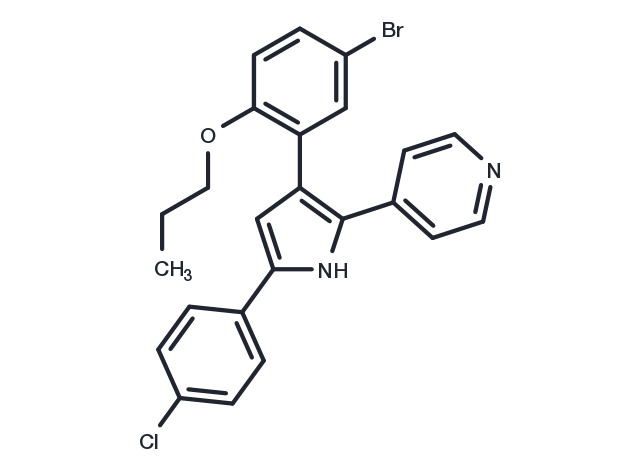Powder: -20°C for 3 years | In solvent: -80°C for 1 year


L-168049 is a selective and non-competitive antagonist of human glucagon receptor with IC50s of 3.7 nM, 63 nM, and 60 nM for human, murine, and canine, respectively.

| Pack Size | Availability | Price/USD | Quantity |
|---|---|---|---|
| 1 mg | In stock | $ 48.00 | |
| 5 mg | In stock | $ 113.00 | |
| 10 mg | In stock | $ 189.00 | |
| 25 mg | In stock | $ 397.00 | |
| 50 mg | In stock | $ 589.00 | |
| 100 mg | In stock | $ 843.00 | |
| 500 mg | In stock | $ 1,730.00 | |
| 1 mL * 10 mM (in DMSO) | In stock | $ 125.00 |

| Description | L-168049 is a selective and non-competitive antagonist of human glucagon receptor with IC50s of 3.7 nM, 63 nM, and 60 nM for human, murine, and canine, respectively. |
| Targets&IC50 | Glucagon receptor (canine):60 nM (IC50), Glucagon receptor (murine):63 nM (IC50), Glucagon receptor (human):3.7 nM (IC50) |
| In vitro | In Chinese hamster ovary cells expressing the human glucagon receptor, L-168049 increases the apparent EC50 of glucagon-stimulated adenylate cyclase and decreases maximal glucagon stimulation with a Kb of 25 nM[1]. L-168049 blocks glucagon-stimulated cAMP formation in mouse liver membrane and inhibits glucagon (100 pM)-stimulated cAMP synthesis in CHO cells expressing the human glucagon receptor with IC50 of 41 nM [3]. |
| In vivo | In the liver of L-G6pc-/- mice, L-168049 (50 mg/kg body; p.o.) reduces Pck1 mRNA expression by half within 6 hours. L-168049 prevents the increase in G6pc expression in the kidney and gut [2]. |
| Synonyms | L-168,049 |
| Molecular Weight | 467.79 |
| Formula | C24H20BrClN2O |
| CAS No. | 191034-25-0 |
Powder: -20°C for 3 years | In solvent: -80°C for 1 year
Ethanol: 3.4mM
DMSO: insoluble
You can also refer to dose conversion for different animals. More
bottom
Please see Inhibitor Handling Instructions for more frequently ask questions. Topics include: how to prepare stock solutions, how to store products, and cautions on cell-based assays & animal experiments, etc.
L-168049 191034-25-0 GPCR/G Protein Glucagon Receptor L168049 L-168,049 L 168049 inhibitor inhibit
